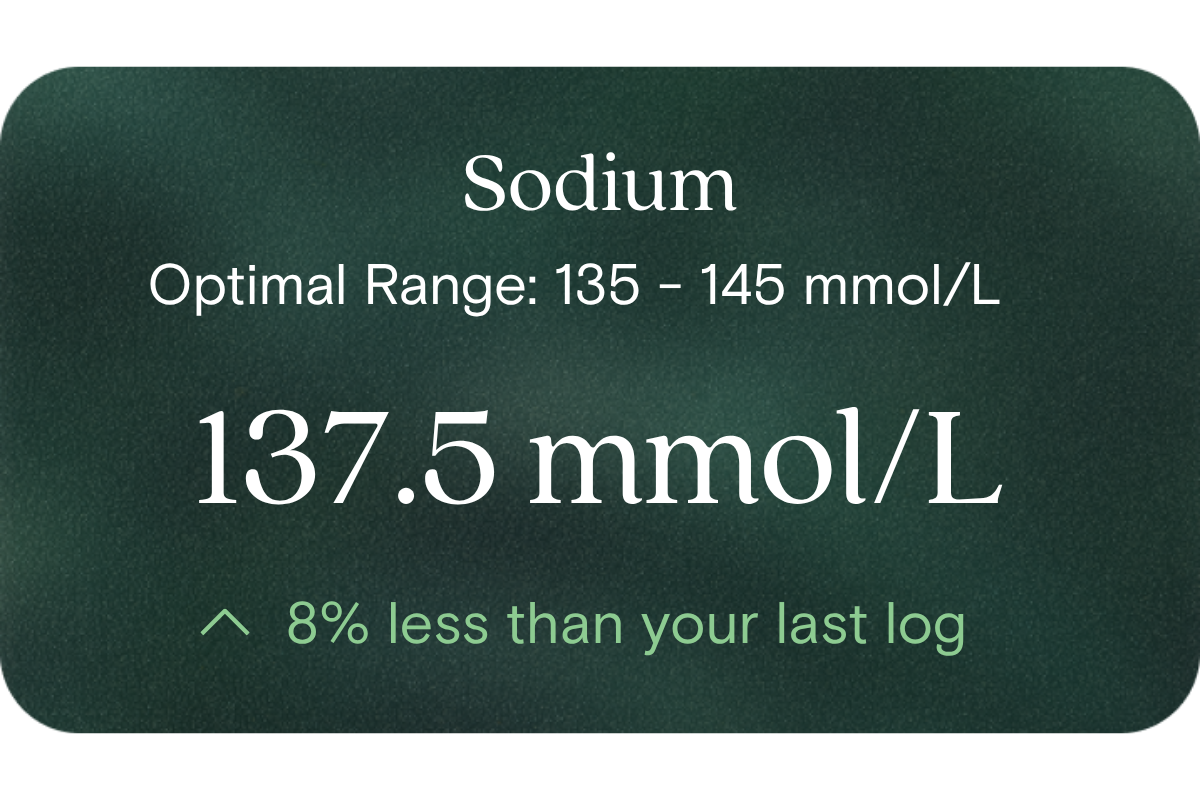What is Sodium?
Sodium is a positively charged ion (Na⁺) and the main extracellular electrolyte in the body. It helps regulate water distribution between cells and plasma, supports nerve and muscle signalling, and contributes to cellular transport systems that affect metabolism and energy use.
Why does it matter for long-term health and wellbeing?
Balanced sodium helps maintain stable hydration, supports cardiovascular dynamics via fluid volume control, and ensures cells can properly exchange nutrients and waste. Over time, persistent imbalance can challenge metabolic regulation, fluid systems and performance resilience — so tracking it helps you fine-tune your environment before issues escalate.
What’s an optimal level of Sodium?
- Standard lab (adult) reference range in Australia: 135 to 145 mmol/L
- While there’s no universally agreed “optimal” narrower band beyond the lab range, many proactive health frameworks aim to keep you comfortably central in that range (e.g. 138–142 mmol/L) to buffer against fluctuations due to hydration shifts, sweat loss, or mild stressors.
What influences Sodium levels?
- Hydration status (dehydration tends to concentrate sodium)
- Fluid losses (e.g. sweating, vomiting, diarrhoea)
- Kidney filtration and excretion efficiency
- Hormonal regulators (e.g. aldosterone, which affects sodium and water balance)
- Dietary salt intake and timing
- Medications, stress, and shifts in fluid compartments
What does it mean if Sodium is outside the optimal range?
A value just outside the standard range isn’t necessarily problematic — it’s a signal to pause and check what might be influencing it (for example, dehydration, heavy sweating, or diet change). If deviations are repeated or extreme, it suggests your internal fluid-electrolyte control is under strain and may warrant further tracking or clinical review. Use the results as insight into adjustments, not alarm.
How can I support healthy Sodium levels?
- Ensure consistent, adequate hydration (match fluids to your activity/sweat levels)
- Moderate salt intake and monitor timing relative to your test
- Balance electrolytes and minerals (e.g. potassium, magnesium) in diet
- Consider your recovery and stress-management routines, which can influence hormonal regulation
- Work with coaching or health tools to adjust intake and recovery based on dynamic needs rather than fixed rules
This information is provided for general health and wellness purposes only and does not replace medical advice.
References
- Aminde, L. N. et al. (2023). Estimated Impact of Achieving the Australian National Preventive Health Strategy Sodium Target. PMC / NCBI.
- RCPA Manual: Harmonised reference intervals – Sodium 18y to <120y 135–145 mmol/L.
- PathWest Age/Gender Reference Ranges – Sodium >18 y 135–145 mmol/L.
- Ausmed – Electrolyte imbalance overview and influences.




















.png)
